ChBE Department Update - Spring 2015
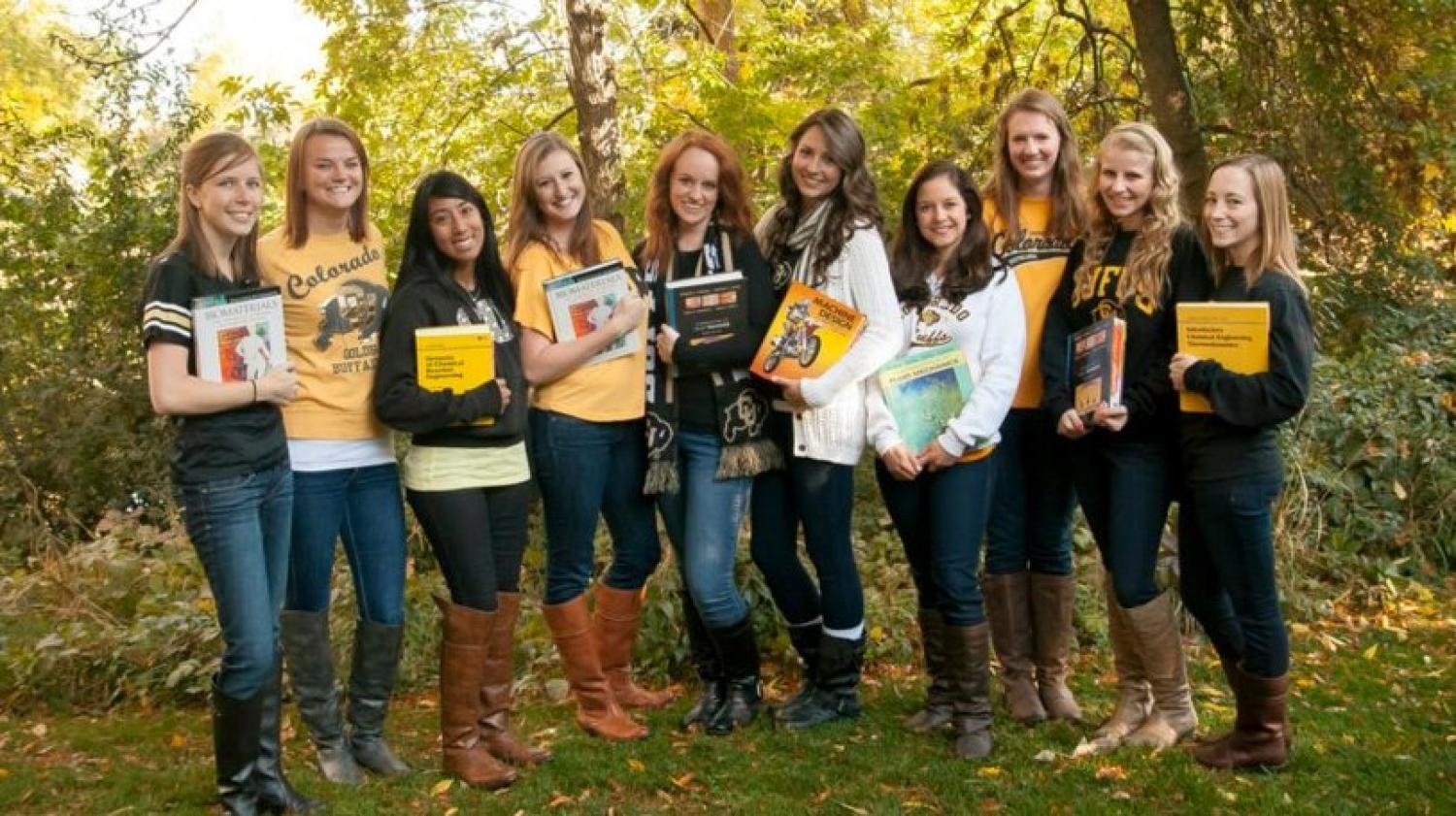
Graduates from the class of '13. Women currently make up 49% of the CBEN major and 30% of the CHEN major, far outstripping the college average of 24% and national average of 20%.
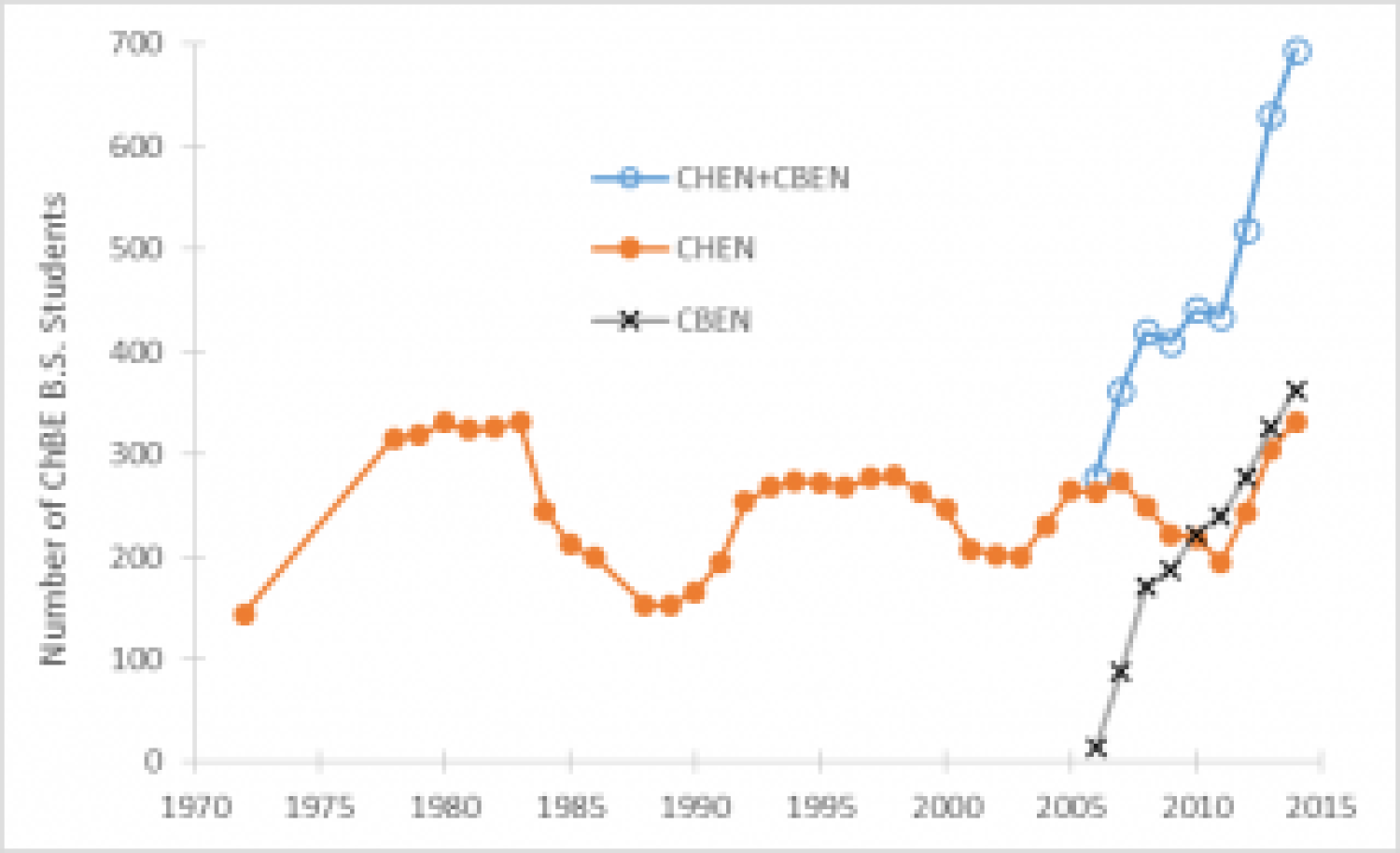 Our Changing Department
Our Changing Department

In the 110 years that a chemical engineering (CHEN) curriculum has been offered at CU-Boulder, a lot has changed.
The CHEN curriculum was first offered in 1904 through the Department of Mechanical Engineering. While the first two CHEN BS degrees were granted in 1908, it was not until 1936 that CU-Boulder’s Department of Chemical Engineering was established.
The number of undergraduate students enrolled in the department wavered in the 150-350 student range for decades prior to 2006; that year, a second department degree, Chemical and Biological Engineering (CBEN), was offered to students. Since then, department undergraduate enrollment has increased 150%, going from 278 students in 2006 to 695 students in 2014. These new enrollments now make ChBE one of the top ten largest departments in the nation.
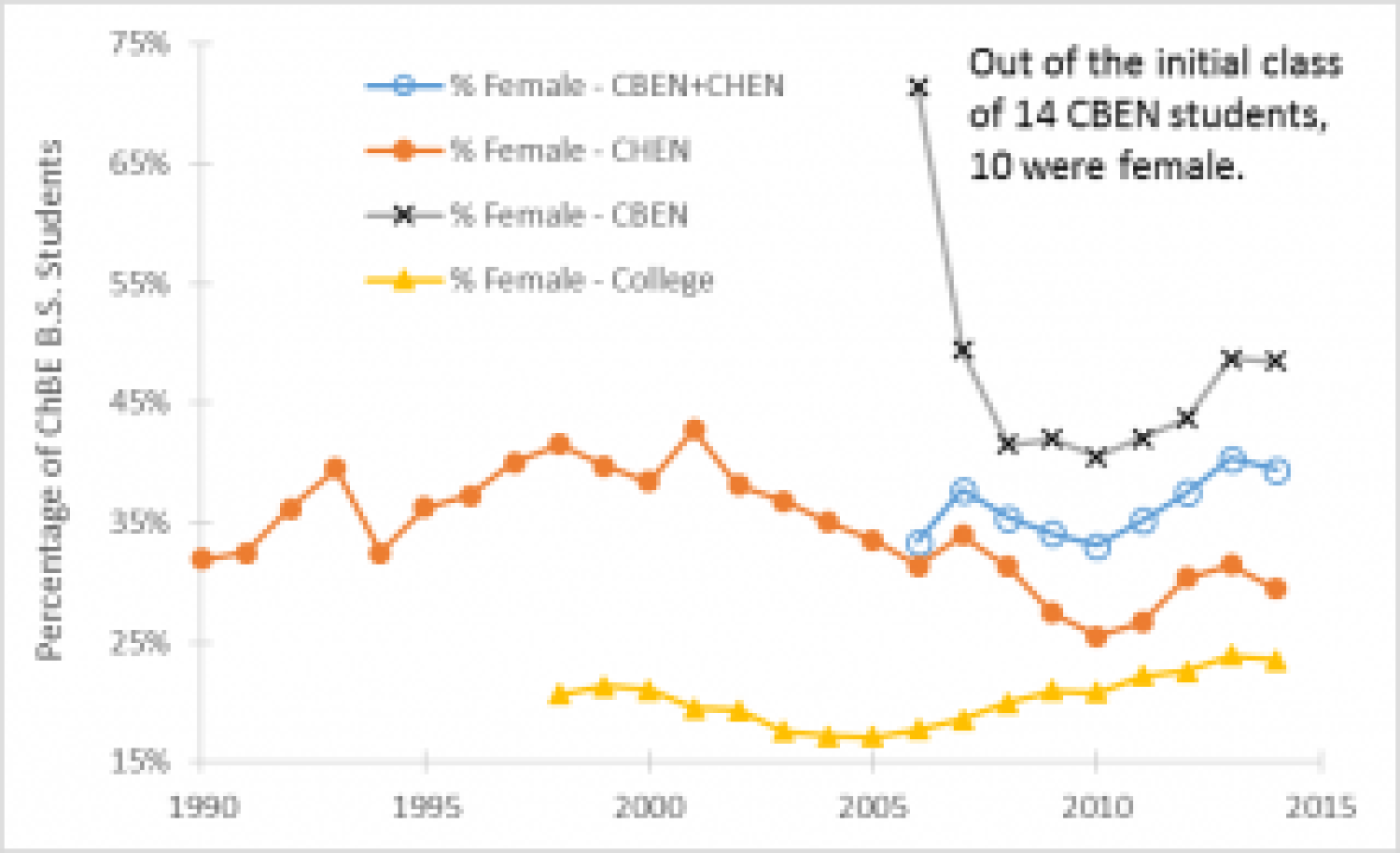
Interestingly, there is a significant gender disparity between the CBEN and CHEN degrees, with the former 40%-50% female and the latter 25%-35% female since 2007. The current 153-person ChBE freshman class, in fact, is 55% female in CBEN and 38% female in CHEN.
>>Read about our changing PhD program.
Undergraduate Lab Opens with Tube-Shattering Ceremony
The department completed its multi-stage move into the Jennie Smoly Caruthers Biotechnology Building late last fall with the transition of the undergraduate laboratories from the Engineering Center to JSCBB.
To inaugurate the new Chevron Teaching Lab, Chevron and ChBE members froze tubing using liquid nitrogen and shattered it in a proverbial ribbon-cutting ceremony.
Junior Lab classes are being conducted in the Chevron Teaching Lab this semester, while Controls Lab is being held in the Broida Family Bioengineering Teaching Lab. The adjacent 30-seat lab classroom is also being used extensively.
In addition to the undergraduate laboratories, two JSCBB auditoriums were completed in the fall and are in use. With these new 68- and 126-seat spaces augmenting the previously completed 200-person auditorium, all ChBE classes except Computing and Chemistry for Engineers are now being held in the building.
Pictured: Cynthia Murphy and Mike Wirth of Chevron use liquid nitrogen to freeze tubing.
Prashant Nagpal: Advancing Personalized Medicine
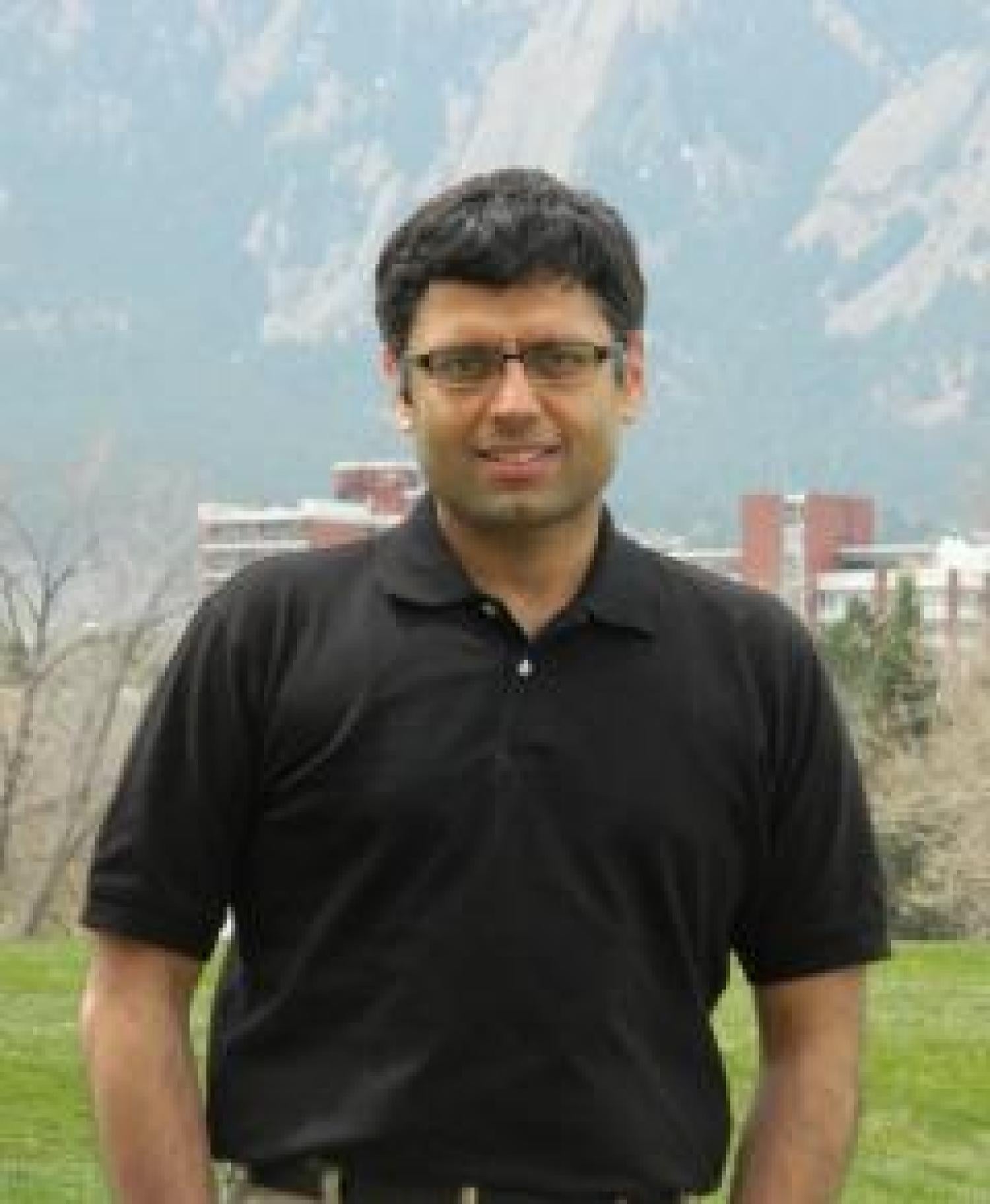
Along with fellow ChBE Assistant Professor Anushree Chatterjee, Nagpal has launched PRAAN Biosciences to develop their method of quickly and cheaply sequencing a human genome using a single molecule. Current methods require larger samples sizes and more time and money.
“We utilize a single-molecule Quantum Molecular Sequencing (QM-Seq) technique using unique electronic and optical fingerprints to directly determine the sequence of single molecules of RNA, DNA and other biomolecules,” says Nagpal.
Bone cancer in one person may be caused by a different gene mutation than bone cancer in a different person, and so the same treatment will not work for both. Using QM-Seq, Nagpal and Chatterjee can scan for gene mutations and, when found, tailor treatments. The work has earned them a $1M Keck Foundation Research Award.
The methodology involves using nanoelectronic detection methods to measure the molecular orbitals of nucleic acids, allowing for identification. This work is just one research thrust of Nagpal, whose expertise lies in nanomaterial synthesis and optical/electron spectroscopy.
>>Read about Nagpal’s work improving solar cells and artificial photosynthesis.
Patent Lawyer Vern Norviel Helps CU Start-Ups
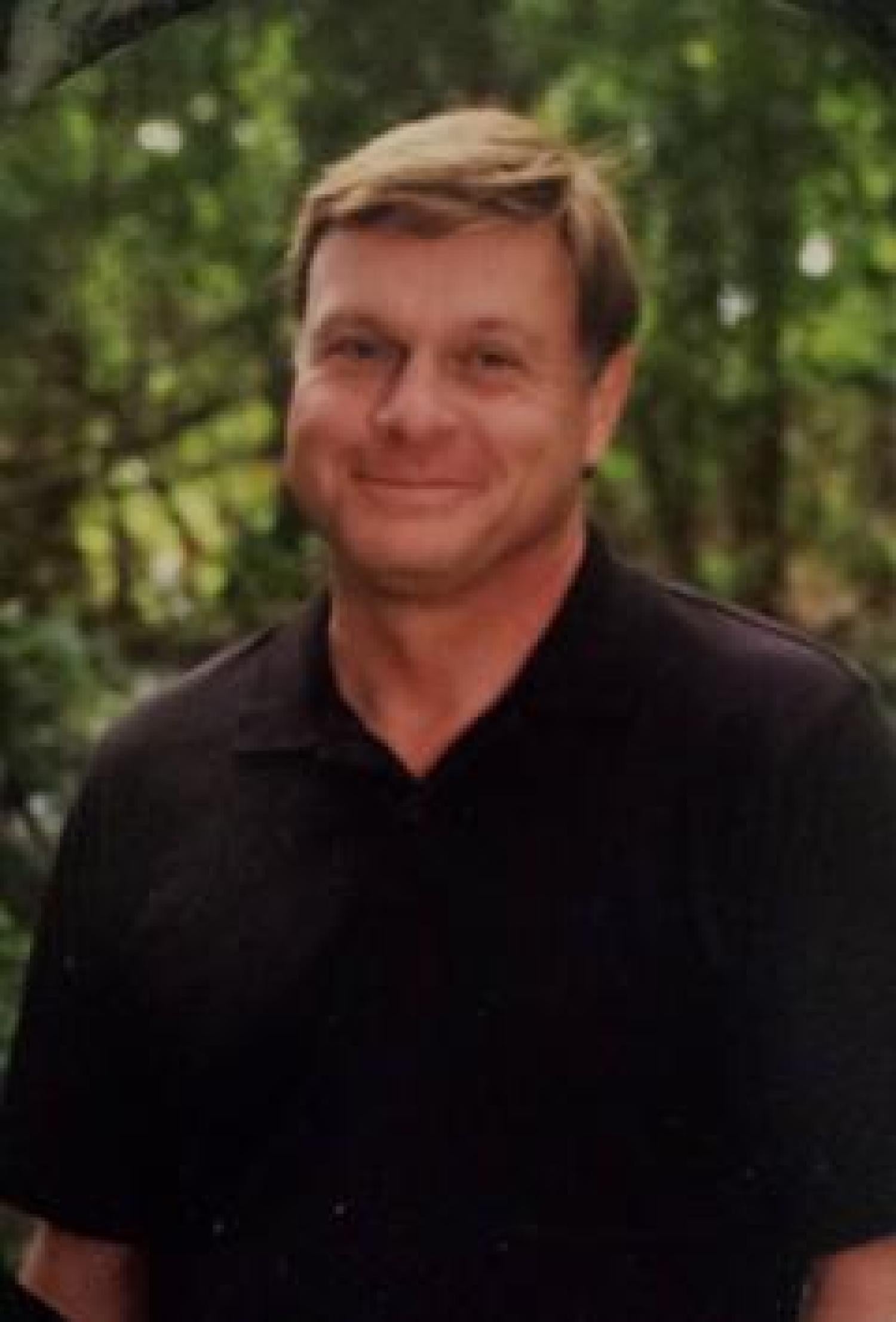
After graduating from CU with a BS in chemical engineering in 1981, Norviel received a Masters from the University of Santa Clara and then attended the University of San Francisco School of Law. Now a Partner at Wilson Sonsini Goodrich & Rosati, Norviel leads the patents and innovation counseling practice and has been named aNorthern California Super Lawyerand honored among the “Top 25 Intellectual Property Portfolio Managers” in California for the past 3 years. He shared some thoughts on his field and beyond.
On a typical day: Almost all of my work is in assisting young, entrepreneurial life science companies. My legal focus is on patents, but ultimately most everything I do is in helping the company get financed, get their products on the market, and get them sold. Many of these companies have real treatments or diagnostics for things like cancer, Parkinson’s and other vexing health care problems.
On endowing a ChBE professorship: This was an easy decision for me. I was relatively poor when I was growing up, and I received a number of scholarships that paid almost all of my bills in college. This support made my entire life possible. Someone helped me then, so it is obvious I owe a lot back. Hopefully the things I do will help young professors and students in the same way.
>>Read about Norviel’s work with CU start-ups and advice for students.
Teaching Middle School Students about Membranes
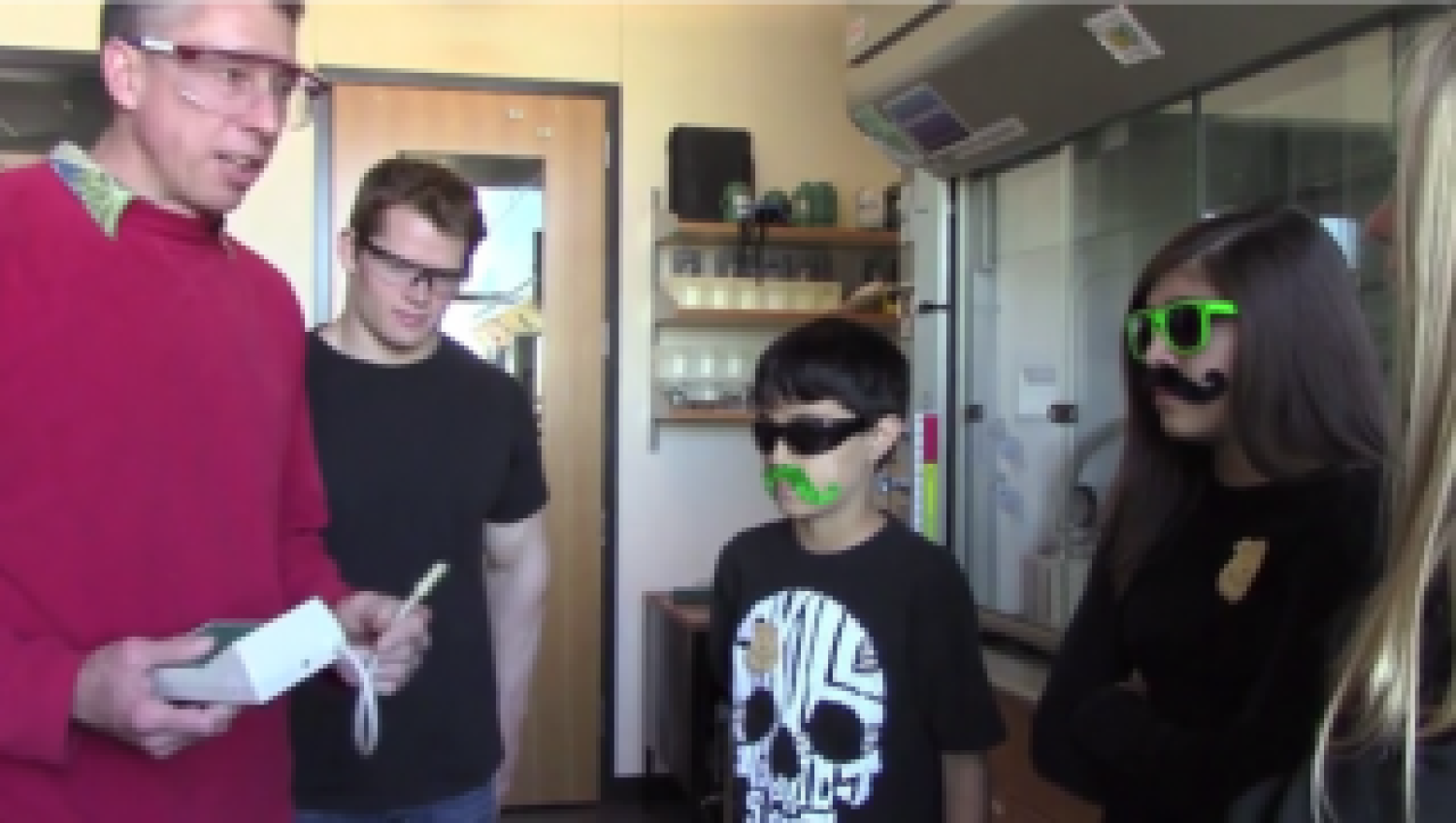
A thief has stolen a zeolite membrane to suck out the atmosphere’s oxygen and hold the world hostage. Watch Hans and the Thief Who Stole His Life’s Work to find out what happens.
Mentor Program Happy Hour Mixes Students with Alumni
ChBE students and alumni mentors met in February at Fate Brewery in Boulder. From left, Andrew Darress (ChemBioEngr '15), Adrienne Blum (ChemEngr ‘11), Richard Noack (ChemEngr '16), Ryon Tracy (ChemEngr ‘12), and Joe Poshusta (ChemEngr PhD‘99).
The ChBE Mentor Program started last February has united 108 alumni-student pairs; get involved as a student or alumni mentor!
Class Notes
Let us know what you've been up to! Send us a class note or update your contact information using our easy online form.
Rick Blankmeier (ChemEngr’05) is featured in the article, Grad’s aim: engineering the perfect brew.
Melinda (Cushing) Riter (ChemEngr PhD’06) currently lives in Hood River, OR, a town in the middle of the Columbia River Gorge with some of the region's finest wine, waterfalls, biking, and breweries. Academically, she has an appointment at Oregon Health and Sciences University (OHSU), where she sees patients in Portland, OR who have severe psoriasis and psoriatic arthritis. She also see patients at Mid Columbia Medical center (MCMC) in the small town of The Dalles, OR. Melinda married Charlie Riter on November 1, 2014. She would be happy to see any CU grads that want to come visit the Gorge!
Kat (Potter) Brookhart (ChemEngr'10) recently moved to California for a new position at BioMarin, which develops treatments for rare diseases. She works in the commercial manufacturing group, where she focuses on the downstream purification process of the target enzyme. She also celebrated her marriage in September.
Faculty, Staff & Student Awards
Distinguished Professor Kristi Anseth received the 2015 Bayer Distinguished Lectureship from the Department of Chemical and Petroleum Engineering at the University of Pittsburgh’s Swanson School of Engineering. She was also elected to the chair line of the MRS.
Distinguished Professors Christopher Bowman and Kristi Anseth received a patent for biodegradable cell scaffolds for use in next-generation tissue engineering applications.
Assistant Professor Joel Kaar received an NSF CAREER Award.
Assistant Professors Prashant Nagpal and Anushree Chatterjee received a three-year, $1M award from the W.M. Keck Foundation for “Quantum Sequencing (Q-Seq): Using Charge Tunneling for Biochemical Assay of Single Molecules.”
Professors Rich Noble and Doug Gin received a two-year, $900,000 award from Arizona State University, with the DOE as the prime sponsor for “Energy Efficient Electrochemical Capture and Release of Carbon Dioxide.” They were also issued a patent for a material used to make a “green” replacement for polar organic solvents, which are commonly used in cleaning, reactions, and processing in many industries.
MD/PhD student Balaji Sridhar accepted the Katherine M. Swanson Young Innovator Award for his company, Nanoly Bioscience, Inc.
Former NASA astronaut Bruce McCandless presented senior Jeni Sorli with a $10,000 scholarship from the Astronaut Scholarship Foundation.
Letter from Chair Dan Schwartz
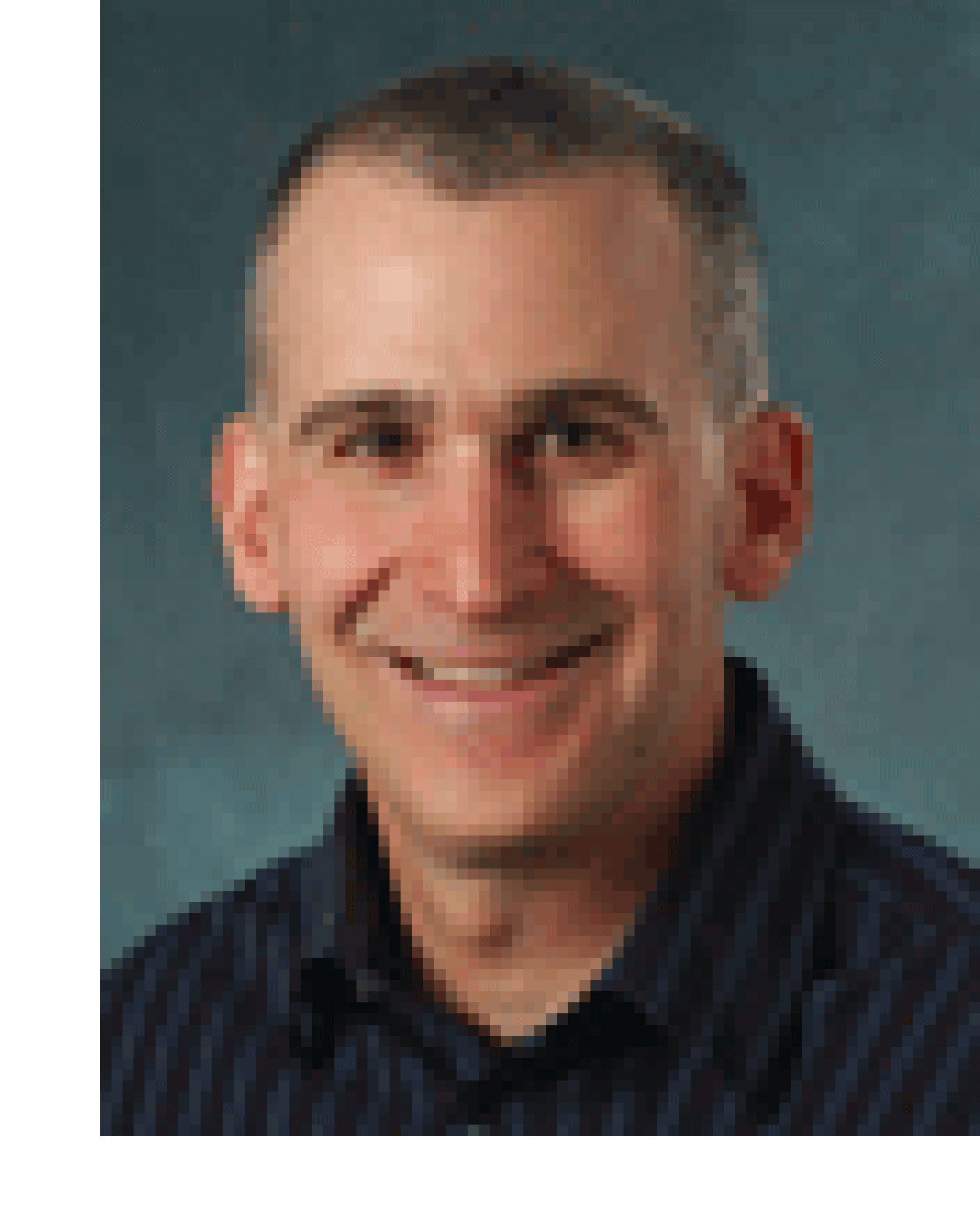
This second interdisciplinary research group will pursue research involving a new type of material that was developed by Bowman and his co-workers, called “click nucleic acids” or CNA. The words “nucleic acids” refer to the fact that these materials mimic the properties of biological molecules like deoxyribonucleic acid (DNA). The word “click” suggests that the compounds can be assembled in a simple synthetic process, like snapping together Lego blocks. DNA exhibits remarkable properties, making it uniquely useful for several technological applications, ranging from therapeutic treatments to self-assembling nano-devices. However, DNA is very expensive to manufacture, and is generally prepared in very small quantities, e.g. micrograms. Chris and his team, which includes several other ChBE faculty as well as members from other departments at CU, will develop scalable methods to manufacture CNA in large quantities. This will enable researchers to use them in entirely new ways, and to pursue new types of applications. We plan to highlight the exciting results of this research in upcoming communications from the department.
Upcoming Events
Mar 19 Energy Frontiers 2015
10am-5pm in UMC Ballroom
Apr 17-19 2015 Rocky Mountain Student Regional Conference
Hosted by CU-Boulder
May 9 CU Commencement Ceremony
8:30am at Folsom Stadium
Quick Bits
Christopher Bowman and Jennifer Cha, along with other ChBE faculty, Noel Clark of physics and David Walba of chemistry, won a $12M award from NSF that funds the Soft Materials Research Center.
CU is hosting the 2015 Rocky Mountain Student Regional Conference April 17-19, complete with Chem-E-Car Competition, Mini-Career Fair, Student Paper Competition, Industry-Led Workshops and more. Contact wendy.young@colorado.edu if you are interested in judging, participating in or sponsoring the event.
Curious about our newest research areas? Read the research topics of our first-year graduate students.
In the News
Joel Kaar Wins NSF CAREER Award
Weimer Awarded Grant for 3D Printer Project
Kristi Anseth Elected Vice President of Materials Research Society for 2015, President for 2016
ChBE Startup Nanoly Bioscience Wins Silicon Valley Tech Award for Vaccine Innovation
Ryan Gill Receives Patent for Genomic Microbe-Based Biorefining
Charles Musgrave Receives $533K Grant to Investigate Solar Thermal Water Splitting

